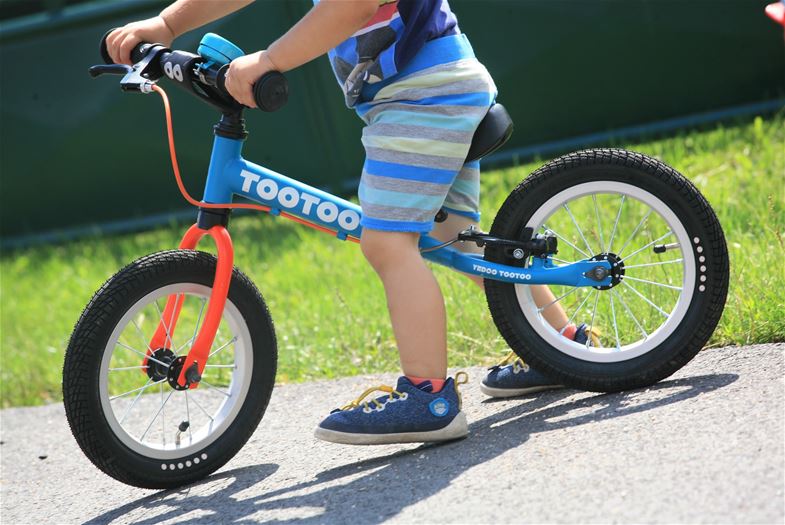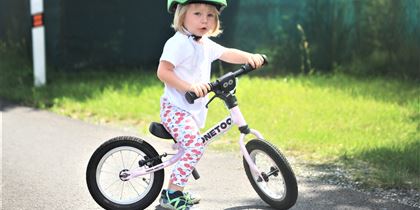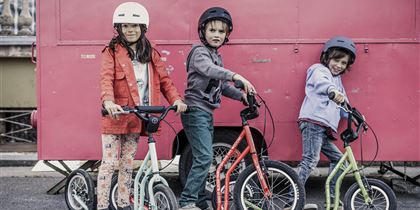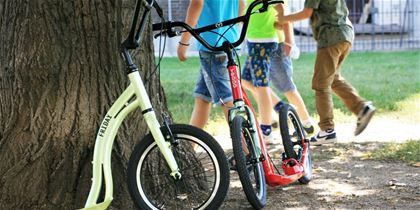Why let kids run barefoot whenever they can
| Vendula KosíkováHave you ever seen judo fighters wrestle in shoes? Probably not, have you? Because they need to react quickly and accurately, while being as stable and agile as possible. So don’t rush to get your children their first shoes and let them go barefoot whenever you can. This will make their first steps easier and support their universal development.
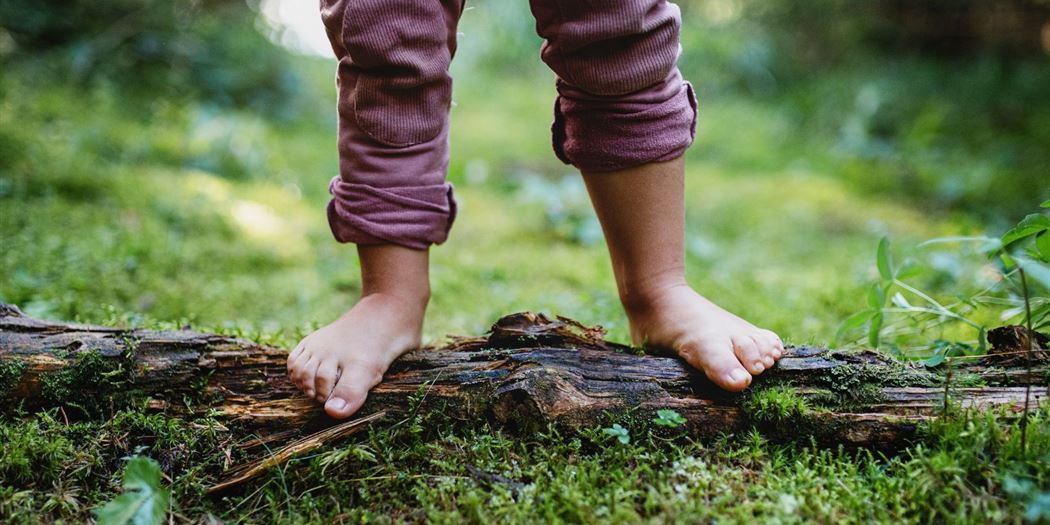
The soles of the feet are more sensitive than the hands in childhood
- Human walking, although it may not seem like it, is a very complex task involving many muscle and tissue groups. It is under the direct influence of sensations from the periphery and the central nervous system, which interact to ensure easy and efficient movement.
- There are 200,000 nerve endings on the sole of each foot alone, and 26 bones, 33 joints and more than 100 muscles, tendons and ligaments in the foot and ankle.
- Many people resort to barefoot walking whenever they need to think something through or resolve a seemingly intractable situation. You should try it sometime.
Children’s feet are more sensitive than hands in the first months of their life. Children feel the world through them, just like with their hands – they feel the surface, the texture, the warmth, the cold, etc.
In addition to the high number of nerve endings, of which there are around 200,000 on the feet alone, there are also a large number of proprioceptors in the feet, which allow the perception of position, tension and the slightest movements in the body.
This incredible sensitivity is the key to proper coordination of movements and maintaining stability. So don’t be surprised when young children take off their shoes, which prevent them from moving confidently and fully perceiving the space around them.
They feel safer walking barefoot, look down at the ground less and don’t lose their balance as often. This has been confirmed by numerous scientific studies, according to which children aged between 1 and 2 years show greater stability and dexterity when taking their first steps barefoot than children wearing shoes.
This is largely because they receive much more extensive information about the surface and position of the body through their bare feet than if they were wearing shoes and had to rely only on stimuli coming from visual and other receptors such as the vestibular (balance) system in the inner ear, etc.
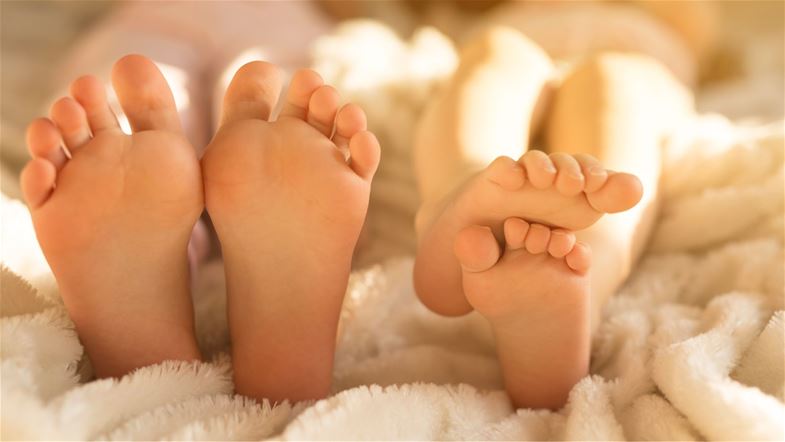
Freedom and space for natural growth and development
In the first years of life, when children’s feet are just beginning to take shape, develop and grow, it is important not to restrict them unnecessarily and make them end up like the square melons they grow in Japan, whose shape adapts to the container they grow in.
“Shoes should only serve as protection against injury, extreme cold or heat. Therefore, and if necessary (but not before 3-4 months of independent walking), choose shoes that are closest to barefoot walking, advises physiotherapist and podiatrist Edita Prošková.
A study published in Frontiers in Pediatrics revealed that children and adolescents who spend most of their time barefoot develop motor skills differently than those who wear shoes.
Children who are used to walking barefoot are significantly better at jumping and balancing compared to those who wear shoes, especially between the ages of 6 and 10. Although these beneficial effects of barefoot exercise diminish in older adolescents, still research shows the importance of barefoot exercise for children’s motor development.
“You should prefer socks with non-slip soles or so-called baby shoes to slippers at home. This is especially true for small children who are learning to crawl. The less flexible soles of slippers usually do not allow the natural flexion of the sole in the same place as when walking barefoot, thus limiting the involvement of the toes in the movement and also forcing children to turn their toes sideways.
In order for the foot to develop properly, it does not even need artificial support in the form of ankle boots with fixed ankles. Quite the opposite, this stiffening prevents children from implementing natural motor patterns, strengthening the muscles in the ankle area and creating a natural transverse and longitudinal arch.
Ankle boots have their place only in orthopaedics, mainly in the correction of congenital or acquired foot defects, but not in healthy individuals as prevention.”
Check the temperature behind their neck
According to Edita Prošková, even the temperature of the floor is usually no problem: “If a child’s feet are cold, it doesn’t mean the child is suffering. It is better to check if small children are warm by feeling the back of the neck.
If possible, let children run barefoot in sand, grass, puddles, etc. These activities, which activate intense communication between the brain and the sensory receptors, can also be seen as a great exercise for the brain.
Compensate for the lack of such opportunities by creating a trail of different textures at home, letting children run on bubble wrap, or buying them sensory mats instead of slippers – root carpets, etc.”
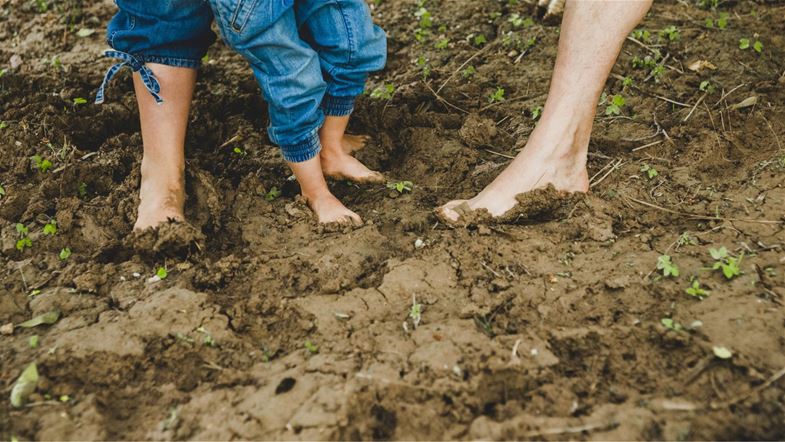
Choose shoes that adapt to the shape and function of the foot, never the other way around
Edita Prošková recommends barefoot shoes, which are the closest to barefoot walking, conform to the shape of the foot and provide enough space for the physiological function of the foot and its growth.
When choosing the right shoes, check if they:
- respect the natural shape of the child’s foot, do not deform it, have a wider toe giving the toes enough room to spread and extend when walking
- are straight along the inner big toe edge and begin to curve behind the big toe, so that it is not pressed against the other fingers
- have a flexible sole in all directions allowing the foot to roll naturally, as when walking barefoot. (Watch out for soles that bend in the middle of the shoe, not in the toe area – where the foot bends when barefoot.)
- have flat soles, no heel or raised toes
- have free space in the toe – toe room (approx. 1 cm), which serves as a reserve for the natural extension and widening of the foot when walking and also as a reserve for foot growth.
- are full shoes that fit well in the heel and instep and prevent the foot in the back of the shoe from wobbling from side to side. Definitely avoid pump-shaped shoes and flip-flops, from which the foot slips and children have to hold them with their toes.
- are made of breathable material
- have reasonably grippy outsoles (similar to the grip of human skin)
- are extremely light, wearing them does not require unnecessary energy expenditure
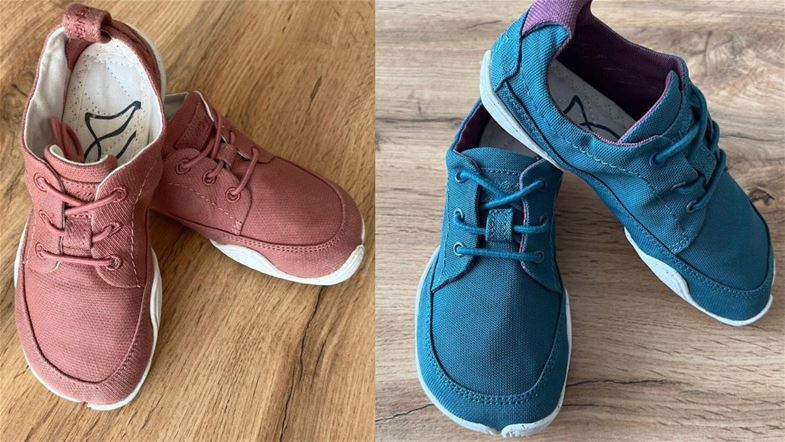
Proper rolling of the foot when walking
When walking, the foot rolls from the pad starting from the heel through the sole of the foot along the big toe and little toe rays to the metatarsal heads and toes. The movement ends with the big toe being the last to leave the mat.
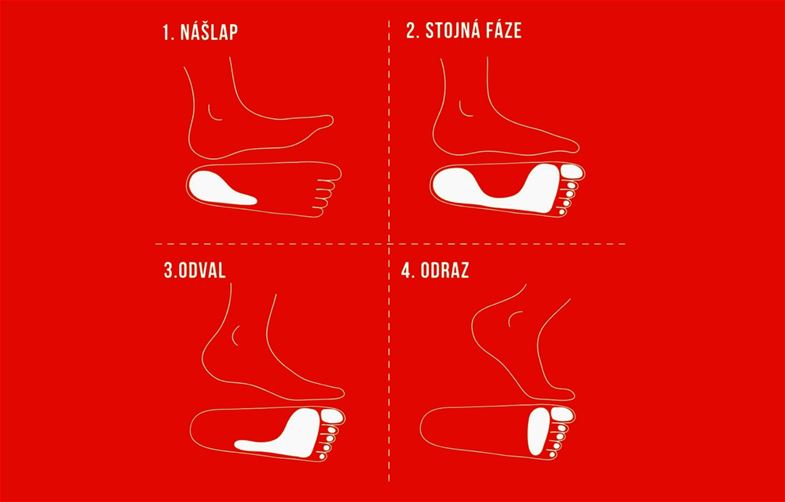
Shoes suitable for riding on a balance bike
Same as when walking, shoes with flexible soles are also best for riding a balance bike and other activities that allow children to push-off naturally and involve the whole foot in the movement.
More on riding a balance bike in the article “What you should know before you put your child on a balance bike”.
